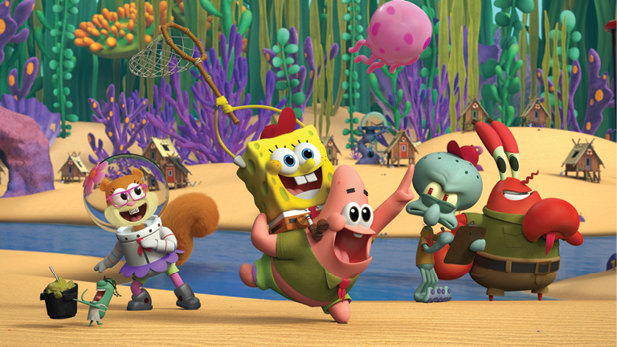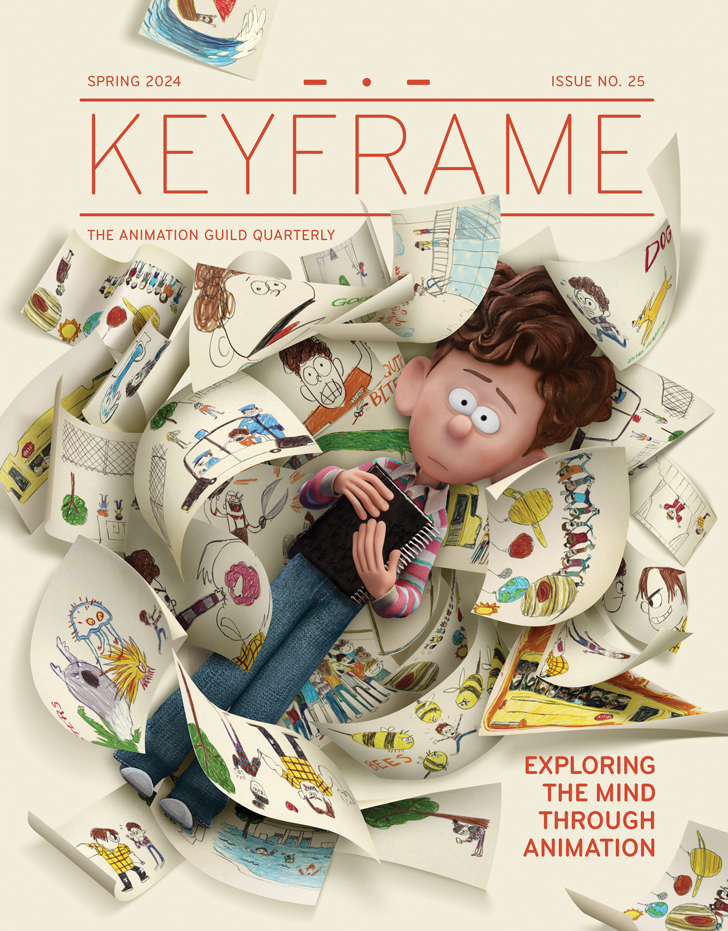Twenty-five years ago, Nickelodeon Animation Studio opened in Burbank. Within a year it released SpongeBob SquarePants, now one of the longest-running animation series in the U.S. So what turned a show about a kid with a sponge for a head into a fan favorite?
Marc Ceccarelli, who started as a Writer and Storyboard Director and is now an Executive Producer on SpongeBob SquarePants as well as its spinoffs, Kamp Koral: SpongeBob’s Under Years and The Patrick Star Show, says, “There weren’t many cartoons that were made for children and their parents to enjoy together until … Nickelodeon started its original animation block. I think [it’s] a great market they helped engineer that’s valuable to bring families together.”
Michael Rubiner, who has worked on and off for Nickelodeon since its previous incarnation in the early 1990s, credits this kind of broader appeal to the success of The Loud House, where his work as Story Editor and Head Writer led to his current role of Executive Producer. This show about a big family with 11 kids has been going strong since 2016. He says, “It’s basically a family sitcom, which is both timeless and universally relatable.”

But “Nick” has connected with viewers in other ways, as well. With 14 years at the studio over the last two decades, Bryan Konietzko is the Co-Creator and Art Director of Avatar: The Last Airbender and The Legend of Korra. He says Avatar hit its mark because it’s “a hero’s journey being told in a continuous storyline with relatable characters who mature along the way.” He also credits deep world-building, another element that contributes to SpongeBob SquarePants’ success.
Konietzko looks back fondly on his early years at Nickelodeon, especially the storyboard review meetings. “It was fun in the old days to see the physical storyboards pinned up around an entire conference room to really get the feel for an episode,” he says. “We had a lot of laughs with the crews doing ridiculous drawings with Sharpies on Post-it notes—one of my favorite mediums.”
For Ceccarelli satisfaction comes from longevity. “I’ve been working with the same core group of writers for a while now, and it’s great to bounce weird, crazy ideas around and watch them form into an episode,” he says.

Rubiner feels the same about being on a show over time. “We’ve been doing this for seven seasons, so things run pretty smoothly, making it a fun and easy-going environment to work in,” he says. “As one of our crew members once said, ‘There are no cartoon emergencies.’”
Asked about Nickelodeon’s influence on the animation industry, Konietzko says, “I think it’s largely been an artist-friendly studio that puts the focus on making good shows from specific perspectives rather than just trying to sell toys or follow trends.” This can be seen in many of Nickelodeon’s creator-driven programs, from My Life as a Teenage Robot (Rob Renzetti) to El Tigre: The Adventures of Manny Rivera (Sandra Equihua and Jorge R. Gutiérrez). Konietzko says he feels fortunate to have been able to work with his partner Michael DiMartino to “create a show out of things we loved and were personally passionate about.”
On the subject of Nick’s legacy, Rubiner adds, “It’s always been about putting kids first, trying to create shows that really speak to them, make them laugh, and promote a positive message. Or in the shorthand version we sometimes use at Nick: smart-heart-fart.”







.png)